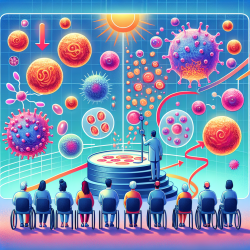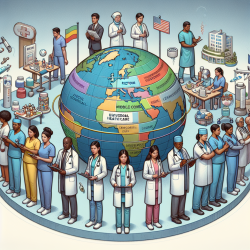Introduction
In the ever-evolving field of medicine, regenerative therapies offer a beacon of hope for treating rare diseases. The research article "Regenerative Medicine Therapies for Rare Diseases" by Lapteva et al. explores the profound potential these therapies hold. This blog aims to guide practitioners in enhancing their skills by implementing the research findings and encouraging further exploration in this promising field.
Understanding Regenerative Medicine
Regenerative medicine encompasses a variety of therapies including cell therapies, gene therapies, and tissue engineering. These therapies aim to repair or replace damaged cells, tissues, or organs, offering potential cures for rare diseases that currently lack effective treatments. The FDA's regulatory framework supports the development of these therapies, ensuring they are safe and effective for patients.
Challenges in Developing Therapies for Rare Diseases
Developing therapies for rare diseases is fraught with challenges, such as:
- Lack of comprehensive knowledge about the disease's genetic and molecular mechanisms.
- Scarcity of clinical data and difficulties in patient recruitment for trials.
- Regulatory hurdles and limited resources for product development.
Despite these challenges, the field offers unprecedented opportunities for innovation and the development of novel treatment technologies.
Opportunities and Advancements
The RMAT designation program is one such advancement that facilitates expedited development and review of promising regenerative therapies. This program allows for early and frequent interactions with the FDA, aiding in efficient product development. Practitioners should consider leveraging this program to accelerate the availability of new treatments.
The Role of Natural History Studies
Natural history studies are crucial in understanding the progression of rare diseases. They provide valuable data that can guide clinical trials and help identify biomarkers and clinical endpoints. Practitioners are encouraged to engage in or support these studies to enhance the development of regenerative therapies.
Patient Engagement
Engaging patients and caregivers in the development process is vital. Their insights can shape the understanding of disease impact and treatment effectiveness. Practitioners should actively involve patients in research and development to ensure that therapies meet their needs and expectations.
Conclusion
Regenerative medicine holds immense promise for transforming the treatment landscape of rare diseases. By embracing the opportunities presented by recent advancements and actively engaging in research and patient collaboration, practitioners can contribute to the development of groundbreaking therapies.
To read the original research paper, please follow this link: Regenerative Medicine Therapies for Rare Diseases.










